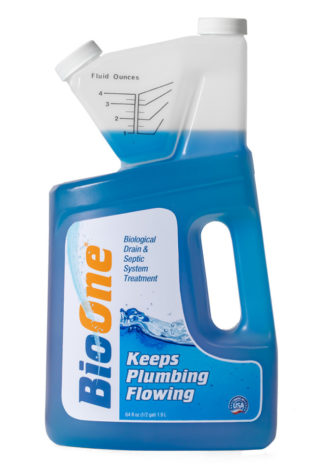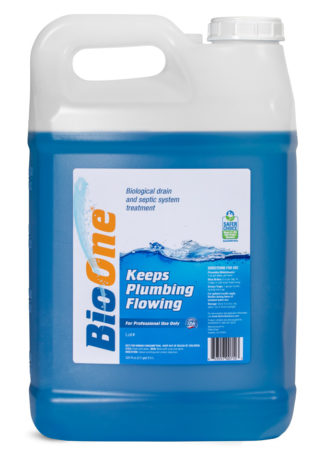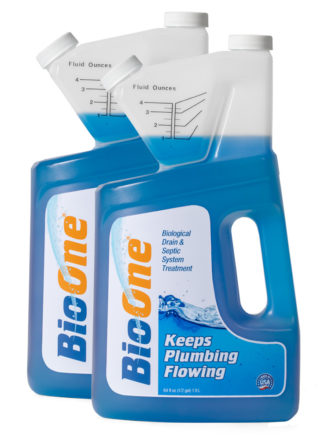
Leach & Drain Fields
Using BioOne Bacterial Cleaner in Drain & Leach Fields
If you have a septic system on your property, you understand the importance of septic tank maintenance, and what can happen when a septic tank fails. The tank itself, however, is not the only part of your septic system that needs to be maintained. Using BioOne to ensure the effectiveness of your leach fields is also a critical part of your septic system’s overall health and functionality.
What Makes BioOne Different!
- U.S. EPA Recognized
- 1st Microbial Product Recognized
- 100% Vegetative Microbes
- Trusted by 1,000’s of Professionals
- Patented Product
- Concentrated Dosing
Why Use BioOne?
BioOne was specifically designed to degrade fats, oils, and greases in leach fields, septic tanks, and grease traps. Existing products on the market, even others made with natural ingredients, only liquefy fats, oils, and greases, allowing them to make their way further down the leach pipe, only to solidify again. Some spore-based cleaners only work in optimal environments, which are challenging to create in underground leach pipes. BioOne liquid will thrive wherever it is introduced, no matter the environment, and it quickly works to degrade a variety of inorganic and hazardous contaminants before they make their way through the leach system and into your yard.
BioOne liquid isn’t only the most effective product on the market today, it’s also the safest! It’s manufactured to food safety standards, and each batch is run through over 100 quality control checks to ensure safety and efficacy. BioOne was also recognized by the U.S. EPA Safer Choice program, as an environmentally safe product for effectively cleaning and maintaining septic systems and grease traps. BioOne liquid is made of completely vegetative microbes, making it a non-hazardous option that is safe for your family and pets.
Why Leach Fields Fail
Leach fields, also known as drain fields, are an integral part of your overall septic system. Pipes connected to your septic tank filter wastewater into the field, where it sinks into the soil and is then broken down. A failing leach field could slow drainage from your home, but it can also put the health of your family at risk.
One of the most common causes of leach field failure is hydraulic overload, which means the home or business is releasing more water into the septic tank than the system can handle. Organic overload, caused by high amounts of non-degraded grease, oil, and organic matter can also effect the functionality of the leach field. Chemicals in the drainage system can interfere with the degradation process as well, putting a further strain on the leach pipes.
How can you tell if your leach field is failing? If the area above the leach field is wet, standing water is visible, or if a strong odor of sewage can be detected, the cause is likely a failing leach field. Another common sign is a change in the grass above the leach field. Typically, the grass may actually appear greener than the rest of the lawn, but it some instances, you may find that it is dying instead of thriving. If you see signs that your leach field or drain field is failing, it is best to take immediate action to prevent more serious damage.
How to Use BioOne in Drain Fields and Leach Fields
For best results, add 2.5 gallons of BioOne to your pumped septic tank. Then add another 2.5 gallons for every 400 square feet of drain field directly into the header pipe or distribution box. If the drain field has completely failed soil fracturing may also be needed.
While BioOne was designed to take fast action against failing drain fields, it’s also effective at preventing backups from the start. Follow recommended dosing parameters frequently to ensure the health and functionality of your entire septic system.



